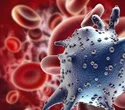Analysis and Automation in Early Pharmaceutical Development
For the pharmaceutical industry, the majority of drug candidates explored in early development will never make it to clinical testing, let alone the market – and the point at which a candidate is abandoned may follow years of work and investment. Tackling this inefficiency, through better drug candidate identification, optimization and selection, could have a major positive impact on drug discovery, to the benefit of pharmaceutical companies and patients alike.
At Pittcon 2018, taking place in February in Orlando, Florida, the pharmaceutical and technology industries will gather to hear about some of the major developments assisting effective early drug development.
This includes topics such as automation. In recent years, this has played a major role, most significantly through the rise of high-throughput screening, and this will only develop further in years to come as robotic technologies advance. There will also be examples of how liquid chromatomegraphy-mass spectrometry has been adapted and progressed to address the challenges of contemporary pharmaceutical development.
Additionally, there will be a unique opportunity to hear from the Enabling Technologies Consortium (ETC), a collaboration involving leading pharmaceutical companies, who are joining forces to tackle the industry’s needs in a mutually beneficial way.
The rise of automation
In recent years, the rise of robotics and automation within the pharmaceutical industry has had a major impact on early drug development. High-throughput screening complements advances in genomics and chemical synthesis to allow scientists to screen molecules against potential therapeutic targets per day. The technology accelerates drug discovery, reduces costs and has led to drug discovery in otherwise neglected disease areas.
The endurance of liquid chromatography
Liquid chromatography-mass spectrometry first came about in the 1970s, but developments in the technique continue to fuel pharmaceutical research today. With trends towards increasingly complex samples, biomedical scientists need ever better ways to prepare and separate them. For example, polymer conjugation has become an important approach in drug development. It aims to alter the pharmacodynamic or pharmacokinetic characteristics of a drug by conjoining it to a polymer, such as polyethylene glycol
However, conventional techniques struggle with characterizing polymer samples. Recent approaches to tackle this complexity include multidimensional LC. For example, a group of researchers recently showed the efficacy of an approach that uses two-dimensional LC on a complex polymer sample mixture to separate degradants and impurities from the polymers, following it up with quadrupole-time-of-flight mass spectrometry.
Collaborating on success
The development of enabling technologies, such as instruments, reagents and computer models, poses a challenge for pharmaceutical companies, particularly at a time when they are under pressure to reduce operating costs and improve productivity. Increasingly, companies are joining together in so-called precompetitive collaborations to tackle mutual needs and find solutions that can work across the industry, rather than just for one company’s needs. This approach has successfully been applied in semiconductor, transportation and other industries; what could it hold for pharma?
In a bid to find out, a group of pharmaceutical companies formed the Emerging Technologies Consortium (ETC). Through the formation of workgroups, they aim to tackle specific priorities in pharmaceutical chemistry, manufacturing and controls. They hope that the approach creates a less legally complicated means for pharmaceutical companies to collaborate and, when they do, allows them to share costs as well make sure they are addressing the most pressing needs of the industry.
Analysis and automation at Pittcon 2018
At this year’s Pittcon, being held in Orlando, Florida February 26th – March 1st 2018, you can hear about the latest advances in analytic and automation in pharmaceutical research from some of the leaders in the field. For example, members of the ETC, including 12 of the world’s largest pharmaceutical companies, will be presenting their experiences of collaborating to address the industry’s needs.
Matthew Bahr from GlaxoSmithKline will be describing how his working group joined together to collect a mass of data to compare the efficacy of robotic platforms for weighing solids. Meanwhile, Regina Black from Bristol-Myers Squibb will outline the development of a new-generation of supercritical fluid chromatography instruments following the loss of the “gold standard” from production.
Also at the conference will be leaders in the field of automation, including Metrohm International, Beckman Coulter, ThermoFisher and Biomek. David Damon of Pfizer Inc will also be speaking about the use of high-throughput screening on Lewis acids and there will be a talk from Jonathan Wingfield of AstraZeneca on the development of a prototype high-throughput mass spectrometry platform for use in drug discovery.
Not only this, but at the Pittcon exhibition you can meet representatives from the world’s leading providers of pharmaceutical research technologies and view their latest products. Companies confirmed for this year’s Pittcon exhibition include ThermoFisher Scientific, Waters Corporation, Restek, Beckman Coulter, and Metrohm, as well as Porvair, Phenomenex, PharmaFluidics and Distek.
Website: International Research Chemistry Awards
#ResearchChemistry, #ChemicalInnovation, #Science, #ScienceResearch, #ScientificResearch, #ResearchAndDevelopment, #ChemistryEducation, #ChemistryExperiments, #ChemistryLab, #ChemistryStudents, #ChemistryStudy, #OrganicChemistry, #InorganicChemistry, #PhysicalChemistry, #AnalyticalChemistry, #Biochemistry, #MaterialsChemistry, #TheoreticalChemistry, #AppliedChemistry, #MedicinalChemistry
Visit Our Website : researchchemistry.org
Nomination Link : researchchemistry.org/award-nomination/
Registration Link : researchchemistry.org/award-registration/
Member Link : researchchemistry.org/member-submission/
Contact Us: contact@researchchemistry.org
Social Media Links
Instagram : www.instagram.com/chemistryaward
Twitter : x.com/Chemistryaward
Pinterest : in.pinterest.com/chemistrymails




Comments
Post a Comment